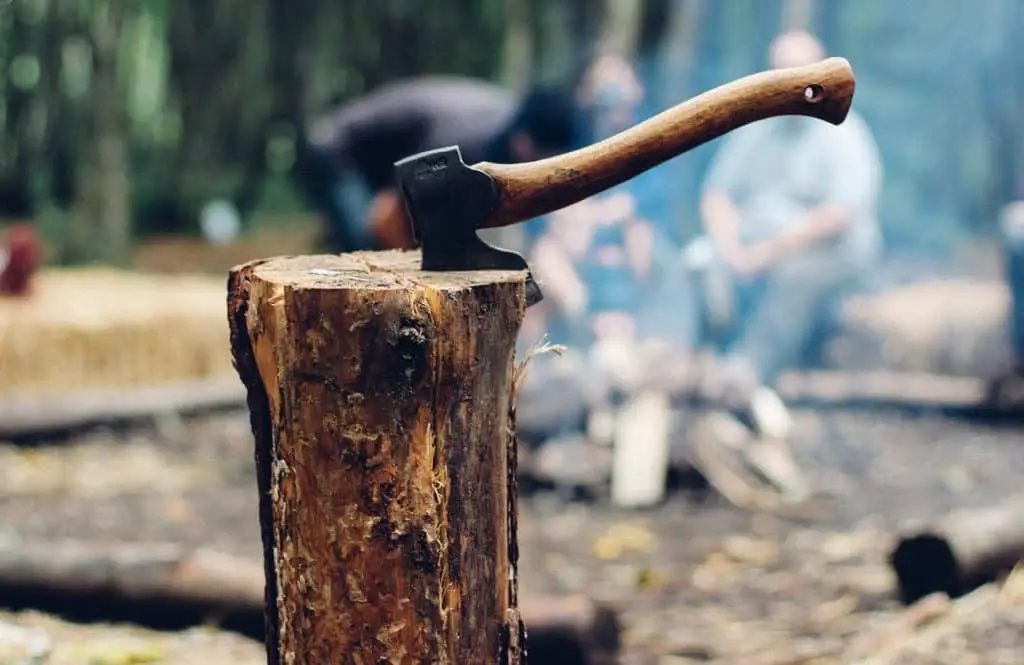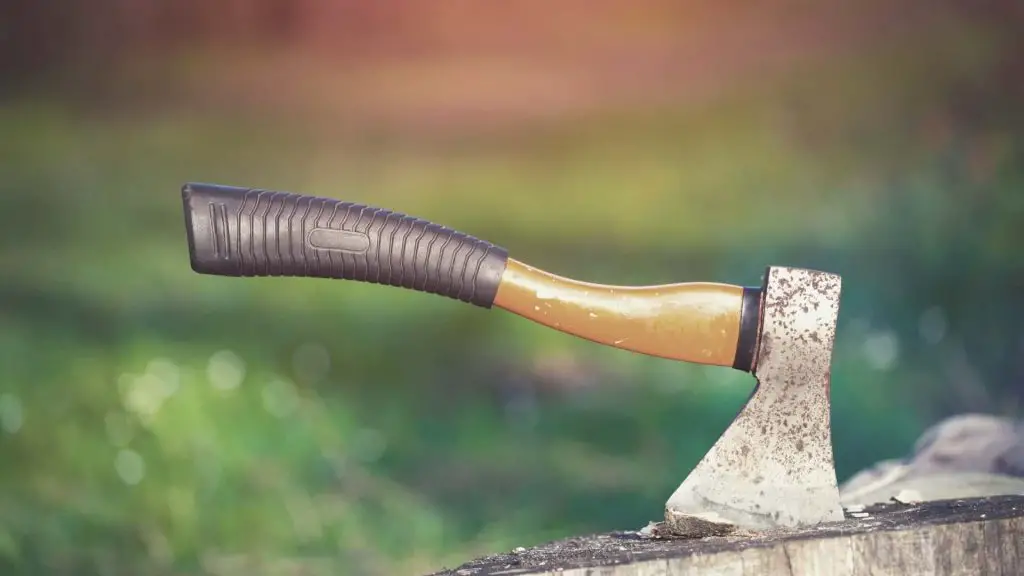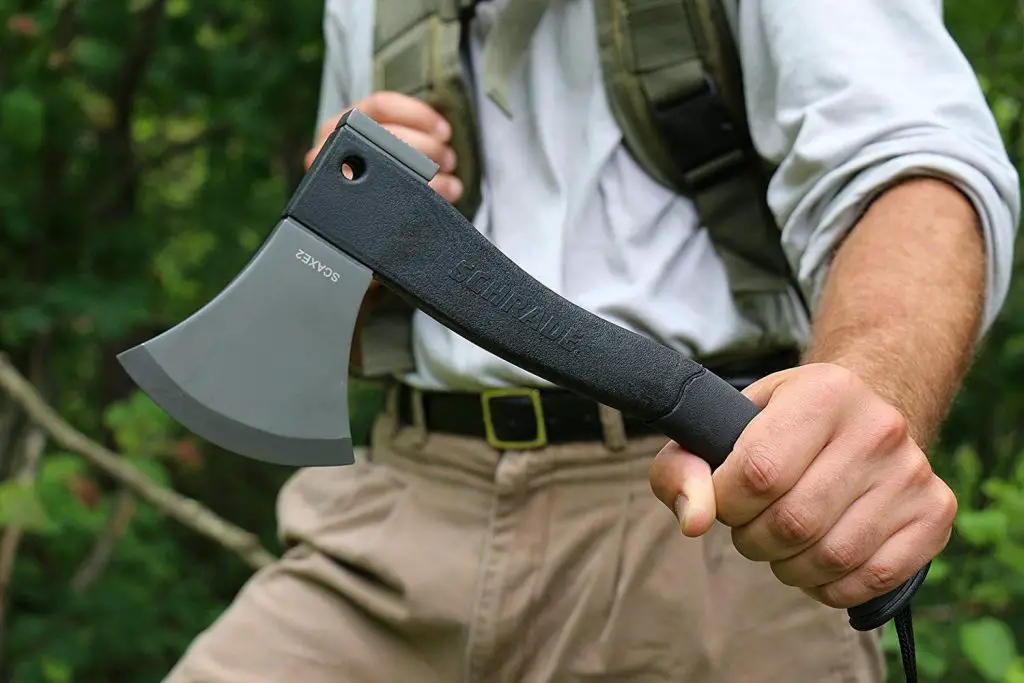Hatchets, axes, knives, and saws can be incredibly useful for backpacking. However, not every backpacking trip is the same, and you certainly don’t need all four of these tools. The question you need to ask yourself is ‘what tool offers the most versatility and value’, and the answer is not always obvious.
Axes can be used to chop down trees for firewood; knives are well-rounded tools that are perfect for cutting flimsy objects or puncturing tiny holes; hatchets can carve a path through thick foliage while saws are to be used in similar situations via different methods.
Given the fact that knives are too small and axes are too large, the choice is easily narrowed down to hatchets and saws.
What’s better: A hatchet or a saw for backpacking?

Essentially, it’s a matter of personal preference. Some people like hatchets as they’re very straightforward to use while others prefer saws due to their nearly limitless versatility. It falls up to you to decide which tool will serve you and your backpacking needs better.
In order to have a clear picture of where hatchets excel and where saws are the best option, let’s review their usefulness and compare the results:
Compactness
If you’re a heavy packer, you will certainly want to bring a saw rather than a hatchet. Typically, saws are smaller than hatchets, although there are exceptions.
For instance, certain hand saw models feature blades that are more than 20 inches long whereas an average hatchet’s length (both blade and handle) is 18 inches.
However, most saw types are small, light, and very easy to carry. Furthermore, there’s a special type of saws that are generally favored by backpackers called ‘folding saws’.
Essentially, these saws are designed just like a folding knife, with the main exception being that they have saw-like teeth.
Ultimately, a hatchet is definitely heavier than a saw, which means that they will slow you down and make your backpack tougher to carry, especially if you intend to travel longer distances. In that regard, saws are more compact.
Durability

Durability represents the object’s ability to retain its efficiency in spite of the effects of the ‘wear and tear’. Simply put, the more you use a tool, the more useless it will become.
What’s more, even if you avoid using it, the ‘tooth of time’ will chip away its durability bit by bit. Durable tools are often reliable tools, and you’ll want to have a reliable tool while you’re out in the wilderness.
However, we can’t pit hatchets against saws in a bout of durability mainly due to the fact that there are different types of both tools. The design of these tools, though, might help us determine a victor.
Hatchets, just like axes, are typically constructed in a very simple way; the head is usually affixed to the blade. Alternatively, there are 1-piece hatchets that feature a head reinforced with extra straps or hardware.
Backpacking saws, on another hand, are generally built after the design of pocket knives or machetes (hand saws). In that regard, they’re slightly flimsier.
Ease of use
Both hatchets and saws can be used in a rather intuitive way. The amount of effort and concentration needed to handle these tools is minimal, although this mainly depends on the object you intend to use them on.
For example, a hatchet will have no trouble chopping a tree log into smaller bits and pieces whereas you’ll have to spend a bit more time doing the same with a saw.
However, a high-quality saw with sharp teeth can be used to wrap up the same process in a more accurate way. Even so, saws are best for cutting, and they’re of little use when it comes to chopping things down.
On another hand, they excel in situations where a delicate, precise touch is needed. While it’s true that a hatchet can rip and tear chunks of wood or foliage down, they’re practically useless for fine cutting. You may end up with dozens of unequally chopped logs for your campfire unless you use a saw.
Versatility
The last ‘test’ involves the ability of hatchets and saws to be useful under different circumstances and different situations.
In short, saws are slightly more versatile than hatchets, mainly because they can be used for pretty much any chore or task – they can be used for precise cutting, but they can also hack larger objects and wood chunks down.
Of course, you’ll be able to achieve the same effects with a hatchet, but you’ll need more patience and extra effort.
Frequently Asked Questions
Is there one thing that hatchets can be used for that saws can’t?

Even though both hatchets and saws can be used in pretty much every possible backpacking scenario, saws are virtually useless as ‘self-defense’ tools.
God forbid you were attacked by a pack of wild critters, you’ll need to fend them off; in the scenario where you still haven’t lit a fire (which repels most wild animals), you’ll be able to defend yourself with a hatchet while a saw will be completely useless.
Are saws easier to store?
That largely depends on the model. For example, bow saws are quite unwieldy and bulky while hand saws are sometimes even larger than an average hatchet.
However, an average saw is typically easier to store in a backpack than an average hatchet.
Is it easier to sharpen saws or hatchets?
Hatchets are much easier to maintain, even if you’re out in the field. Sharpening a saw usually requires special tools, and if it gets dull while you’re out on the backpacking trip, you’re probably not going to be able to use it until you get back home.
What type of saw is best for backpacking?
People generally avoid large, bulky saw types for backpacking, such as hack saws, hand saws, and bow saws. The best types of saw you can use for your backpacking needs are pocket saws and folding saws.
Leave a Reply